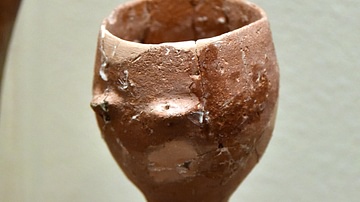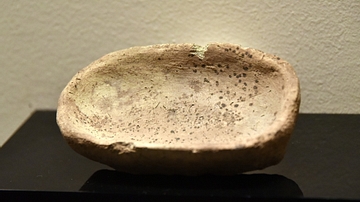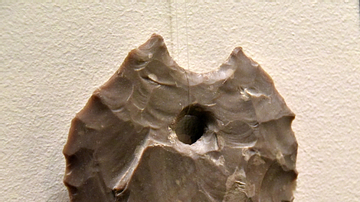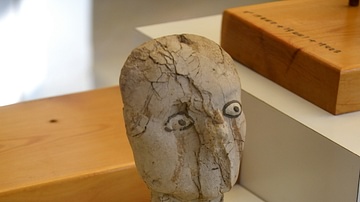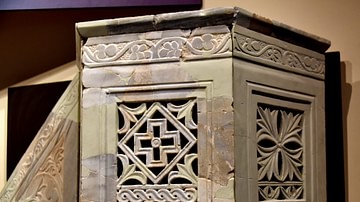Illustration
Jar burials occur in many cultures. In Jordan, the practice of sometimes burying infants in jars appeared in the Chalcolithic period, where the corpse would be placed in the fetal position inside a jar after breaking its rim. After that, it would be buried under the floor of the house. Did the jar symbolize the womb to which the infant returns or was it a convenient coffin? Was it buried under the floor to keep the deceased close to the family or was the weather then too bad for outdoor burial? Late Chalcolithic period, 3800-3600 BCE. From Tulaylat al-Ghassul, Joran. (The Jordan Museum, Amman, Jordan).
Cite This Work
APA Style
Amin, O. S. M. (2019, February 19). Infant Burial from Tulaylat al-Ghassul. World History Encyclopedia. Retrieved from https://www.worldhistory.org/image/10059/infant-burial-from-tulaylat-al-ghassul/
Chicago Style
Amin, Osama Shukir Muhammed. "Infant Burial from Tulaylat al-Ghassul." World History Encyclopedia. Last modified February 19, 2019. https://www.worldhistory.org/image/10059/infant-burial-from-tulaylat-al-ghassul/.
MLA Style
Amin, Osama Shukir Muhammed. "Infant Burial from Tulaylat al-Ghassul." World History Encyclopedia. World History Encyclopedia, 19 Feb 2019. Web. 25 Apr 2024.


